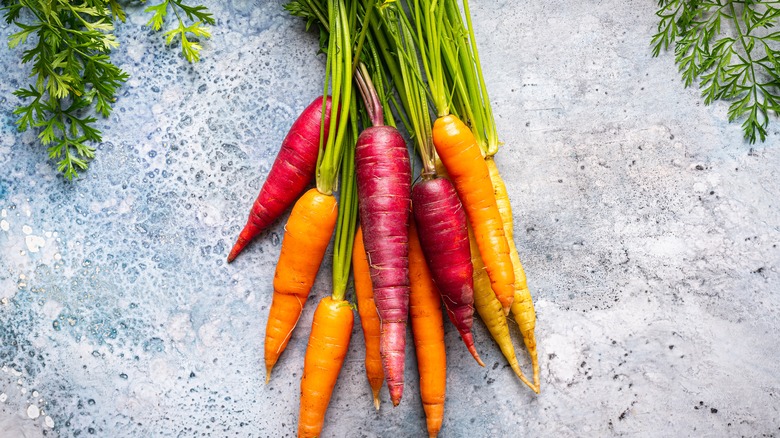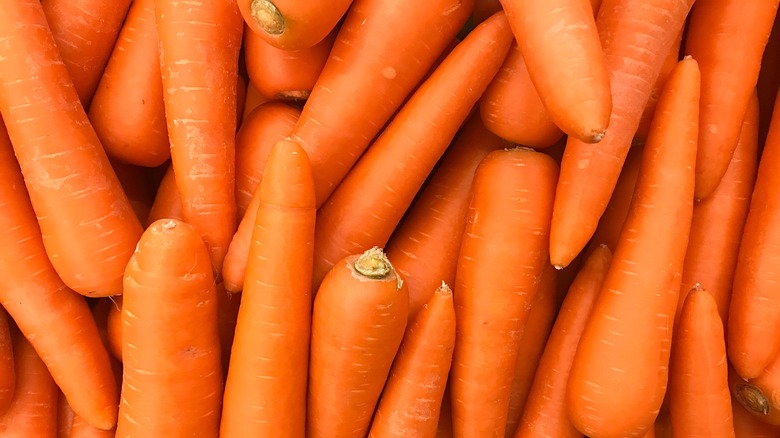The Reason Carrots Are No Longer Exclusively Purple
Have you ever bitten into a sweet and crunchy carrot and wondered how it got from the farmer to your plate? While 85% of all carrots grown in the U.S. are produced in California — Michigan and Texas also yield much of the carrot crops grown stateside, according to the Agricultural Marketing Resource Center. They're also the sixth most consumed vegetable per year in America and according to Statista, consumption of fresh carrots amounted to 8.6 pounds per person in 2021. We clearly love this tasty vegetable that's also good for us.
Carrots pack a major nutritional punch, as they're full of vitamin A, beta-carotene, and fiber. They're also great for your eye and heart health can boost your immunity, and can even improve the appearance of your skin, per EatingWell. While the carrots you most often come across at the grocery store are orange, you may occasionally see a bunch of rainbow carrots in the produce section of your local supermarket. But did you know that up until the 17th century, according to Bon Appétit, most carrots were actually purple?
Why most carrots are now orange instead of purple
Today's orange carrot was cultivated in the 16th and 17th centuries when Dutch farmers took strains of the purple carrot and gradually mutated it to develop the orange carrot, per The Kitchn. While there are many theories for why the color orange was selected, it's theorized that orange carrots were favored over purple ones for their sweet taste and due to the fact that they didn't stain cooking utensils, as purple ones were apt to do.
While there's also a theory that carrots were bred to be orange as an homage to William of Orange, who fought for Dutch independence, it's more likely they were chosen for their superior flavor (via Washington Post). If reading their origin story has made you have a craving for carrots and you've got a bag in your crisper drawer to use, try pickling them (like these Mexican-style pickled carrots), blending them into soups (like this carrot ginger soup recipe), or broiling them as a side dish (as with these unique burnt carrots with brie).

